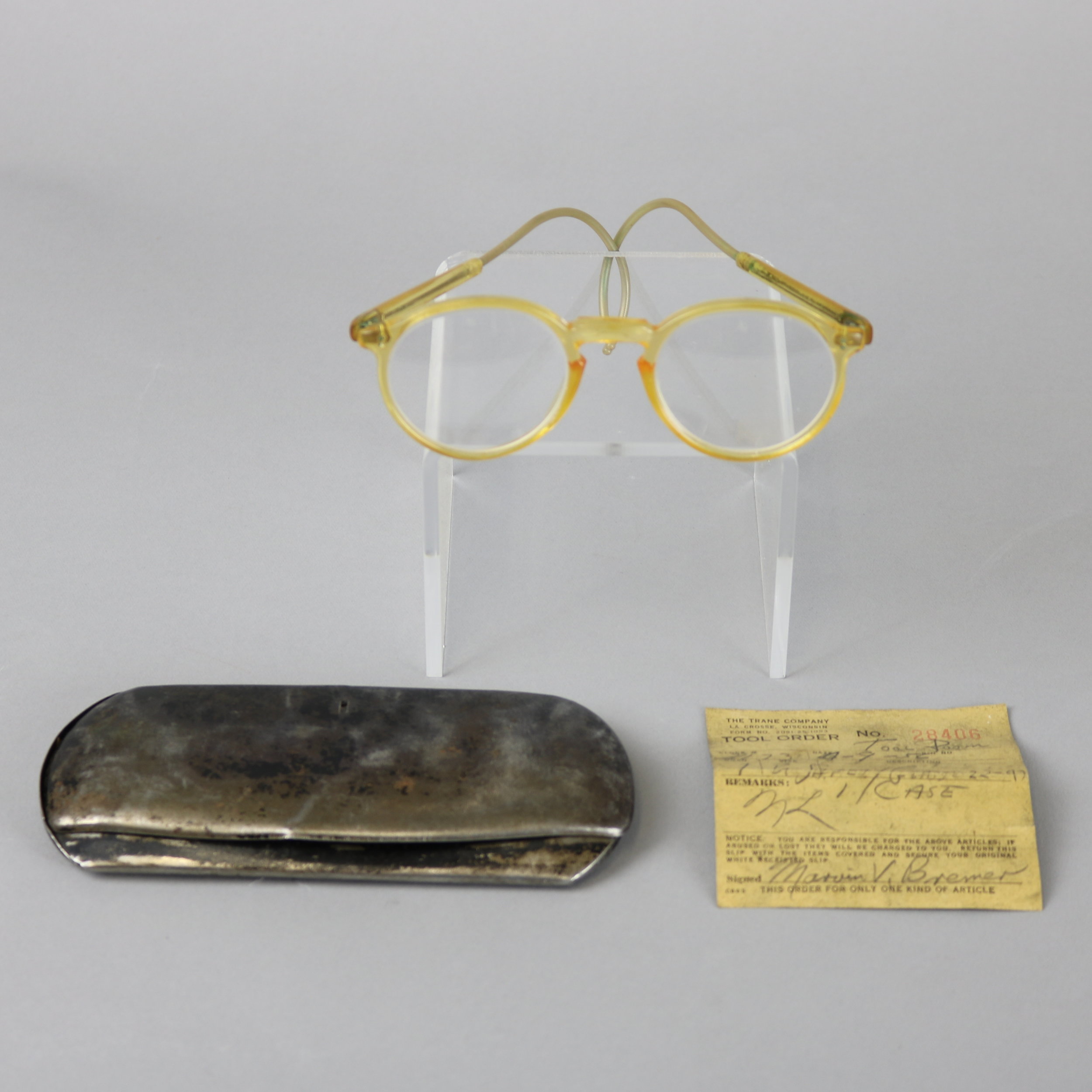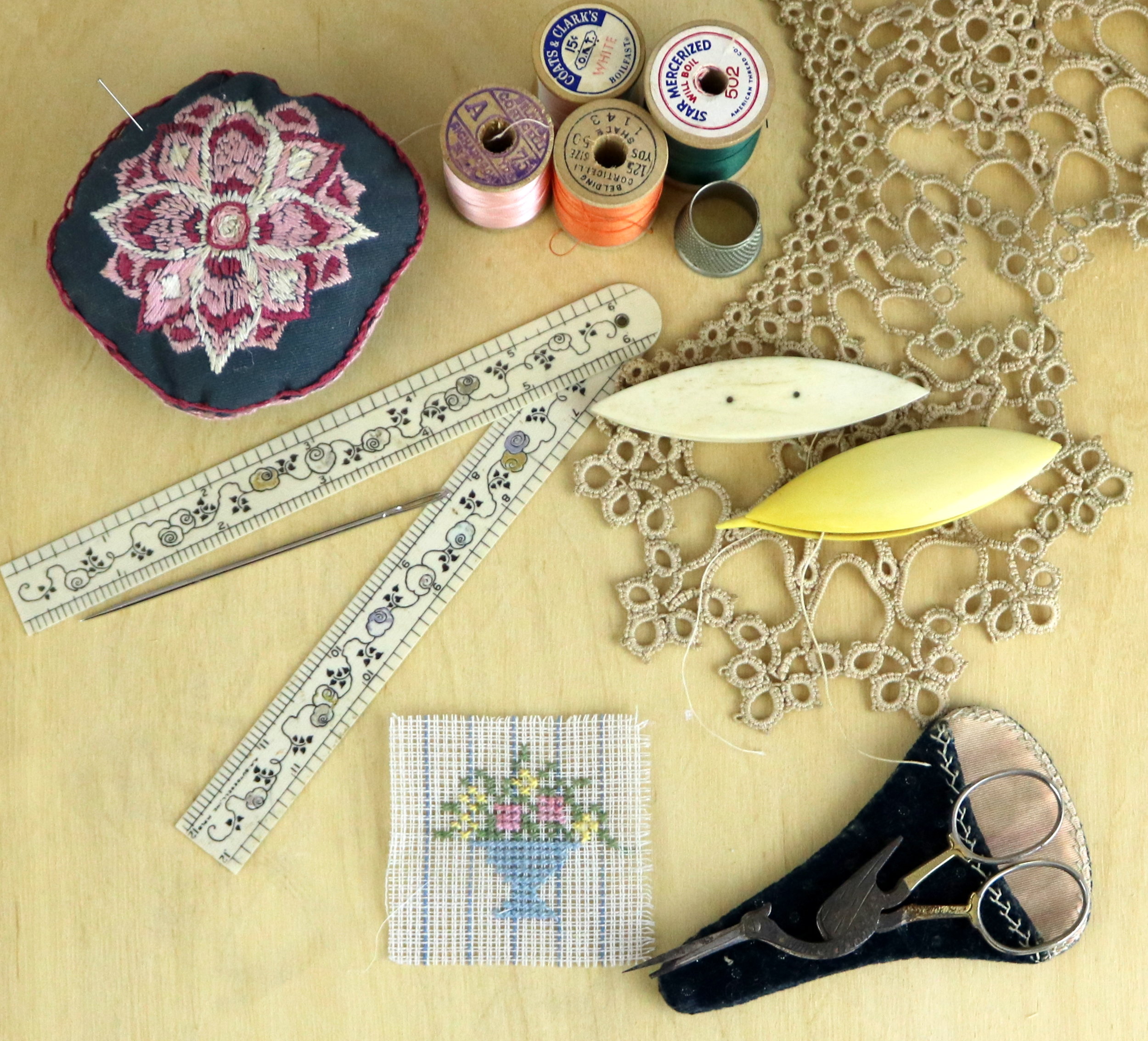Copyright La Crosse County Historical Society
Amy Vach
Catalog Number: 1986.035.01
More than 300,000 employees each year are sent to the hospital due to eye injuries, according to the Centers for Disease Control. And 90% of these injuries would have been preventable if the employee had been wearing protective eyewear.
These might look like ordinary glasses, but they are not.
While they look a bit different from today’s variety of safety glasses, that is indeed what they are.
These glasses used by Trane employee Marvin Bremer feature thick lenses that are almost circular and temple tips that contour around the wearer’s ear. The glasses, made by American Optical Company, are signified by the initials AO on the lenses.
In 1971, the Occupational Safety and Health Administration was created to circumvent accidents in the workplace. However, by the 1940s, most companies made safety glasses mandatory for employees working in woodworking and machining.
How do we know that these safety glasses were used by Bremer?
In 1986, Gene Gunderson, the supervisor of safety and health at Trane Company, donated these safety glasses to La Crosse County Historical Society.
In addition to donating the glasses and their metal case, Gunderson also donated the tool order slip and carbon copy that Bremer completed to check out the department-owned glasses.
The details on the receipt indicate that Bremer checked out these glasses the same year that he started working at Trane Company. In 1956, Marvin Bremer moved his family to La Crosse and began working at Trane. Bremer worked as a machinist in the tool and die department at Trane Company for 30 years.
This article was originally published in the La Crosse Tribune on July 28, 2019.
This object can be viewed in our online collections database by clicking here.



